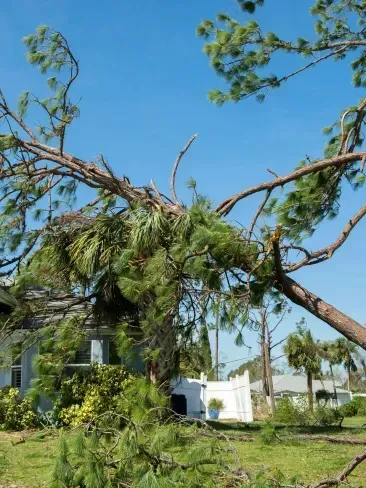Professional Storm Damage Cleanup Services In Fort McCoy, FL
Boa Excavating is a trusted name in excavation and debris removal, serving communities with reliable, efficient, and professional services. We specialize in a variety of heavy-duty tasks. We ensure properties are restored to their best condition after severe weather events. With a commitment to safety, precision, and customer satisfaction, we have state-of-the-art equipment and the expertise to handle even the most challenging storm damage cleanups. Get in touch with us today to get a free quote!
What is Storm Damage Cleanup?
Storm damage cleanup refers to removing debris, fallen trees, broken structures, and other remnants left behind after a storm or severe weather event. Storms can leave significant damage, Whether due to a hurricane, tornado, thunderstorm, or blizzard. They create hazards and obstacles for property owners and residents.
Storm damage cleanup involves assessing the affected area, removing hazardous debris, and restoring the space to a safe and clean condition.
The Purpose of Storm Damage Cleanup
The primary purpose of storm damage cleanup is to restore safety and order after the chaos caused by severe weather. Debris left by storms can create serious safety hazards. These dangers can impede access to homes and businesses, make roadways impassable, and pose a risk to humans and pets. Cleanup efforts aim to remove these hazards, prevent accidents, ensure safe passage, and minimize further damage to structures and landscaping.
Storm damage cleanup is also crucial for protecting the environment. Leftover debris can lead to soil erosion, water pollution, and destruction of local ecosystems if not properly disposed of. With professional cleanup, these environmental risks are reduced, and the area is rehabilitated to support long-term ecological balance.
Methods of Storm Damage Cleanup
Storm damage cleanup can vary depending on the damage’s severity and the property’s specific needs. Professionals use several common methods:
Debris Removal
The most immediate step involves clearing debris from roadways, driveways, yards, and homes. This can include removing fallen trees, branches, trash, and construction materials. Heavy equipment, such as excavators and skid steers, is used to lift and move larger pieces of debris safely.
Tree Removal
Trees must be safely cut down and removed if they have been uprooted or severely damaged. Specialized machinery may be required to deal with large trees or hazardous situations. Professional tree removal ensures that no damage is done to the surrounding property.
Roof and Structural Repairs
Storms can cause significant damage to buildings, including roofs, windows, and fences. Securing and repairing these structures is an important part of the cleanup process to prevent further damage from exposure to the elements.
Flood Water Removal
If flooding is part of the storm’s aftermath, excess water must be removed from affected areas. Sumps, pumps, and dewatering equipment often remove standing water before mold or additional water damage sets in.
Disposal and Recycling
Once debris has been gathered, it’s carefully sorted to ensure proper disposal and recycling. Salvageable materials like wood, metal, and concrete are sent to recycling facilities, while non-recyclable materials are disposed of according to environmental regulations.
Advantages of Storm Damage Cleanup
Safety
A clean and clear property is a safe property. Removing debris, fallen trees, and damaged structures reduces the risk of injury and accidents. This is especially important in high-traffic areas or near residential properties.
Preventing Further Damage
By addressing storm damage quickly, you can prevent further issues from developing. This includes stopping water damage, preventing mold growth, and fixing structural issues before they worsen.
Insurance Compliance
In many cases, storm damage cleanup is essential for filing insurance claims. Insurance companies often require evidence of damage, cleanup efforts, and a professional report on the severity of the situation. Prompt and thorough cleanup can ensure that you meet your policy requirements and receive full compensation.
Property Value Protection
Leaving storm debris unattended can decrease your property’s value. An unkempt property with visible storm damage can deter potential buyers or renters. A professional cleanup enhances curb appeal and maintains the overall value of your property.
Environmental Protection
Storm damage cleanup done professionally helps minimize environmental harm. Proper disposal of debris and recycling efforts help reduce waste and protect local wildlife and ecosystems.
If you need storm damage cleanup services, contact Boa Excavating today. We provide customized solutions for your needs.
